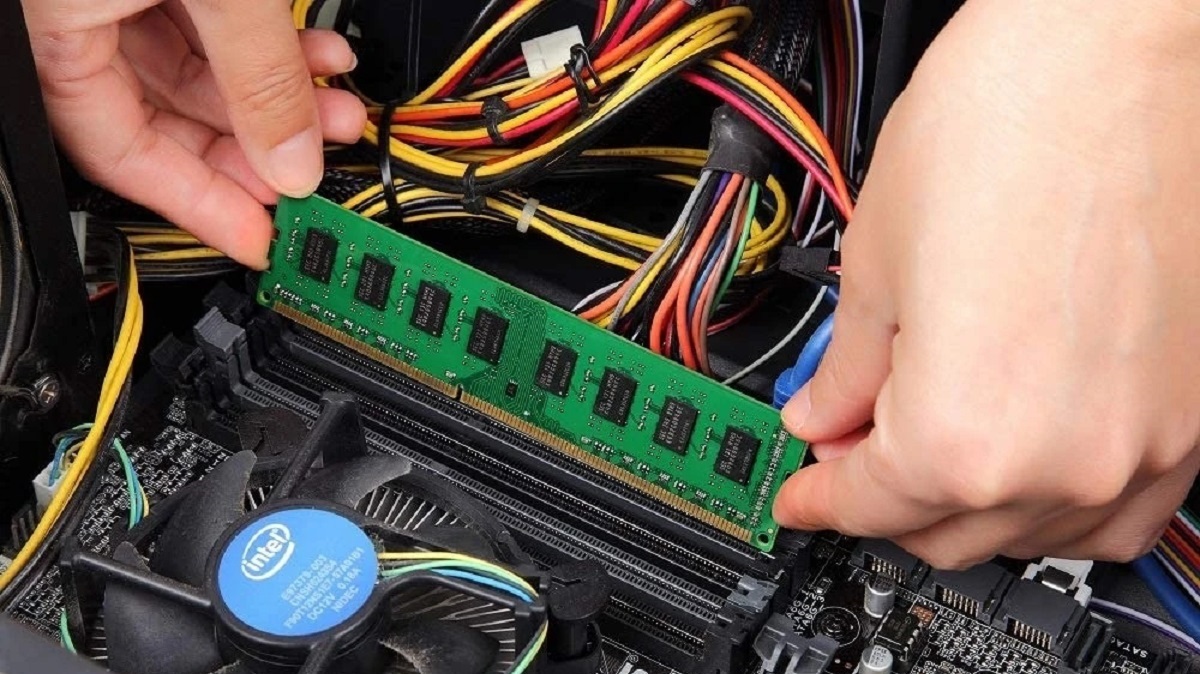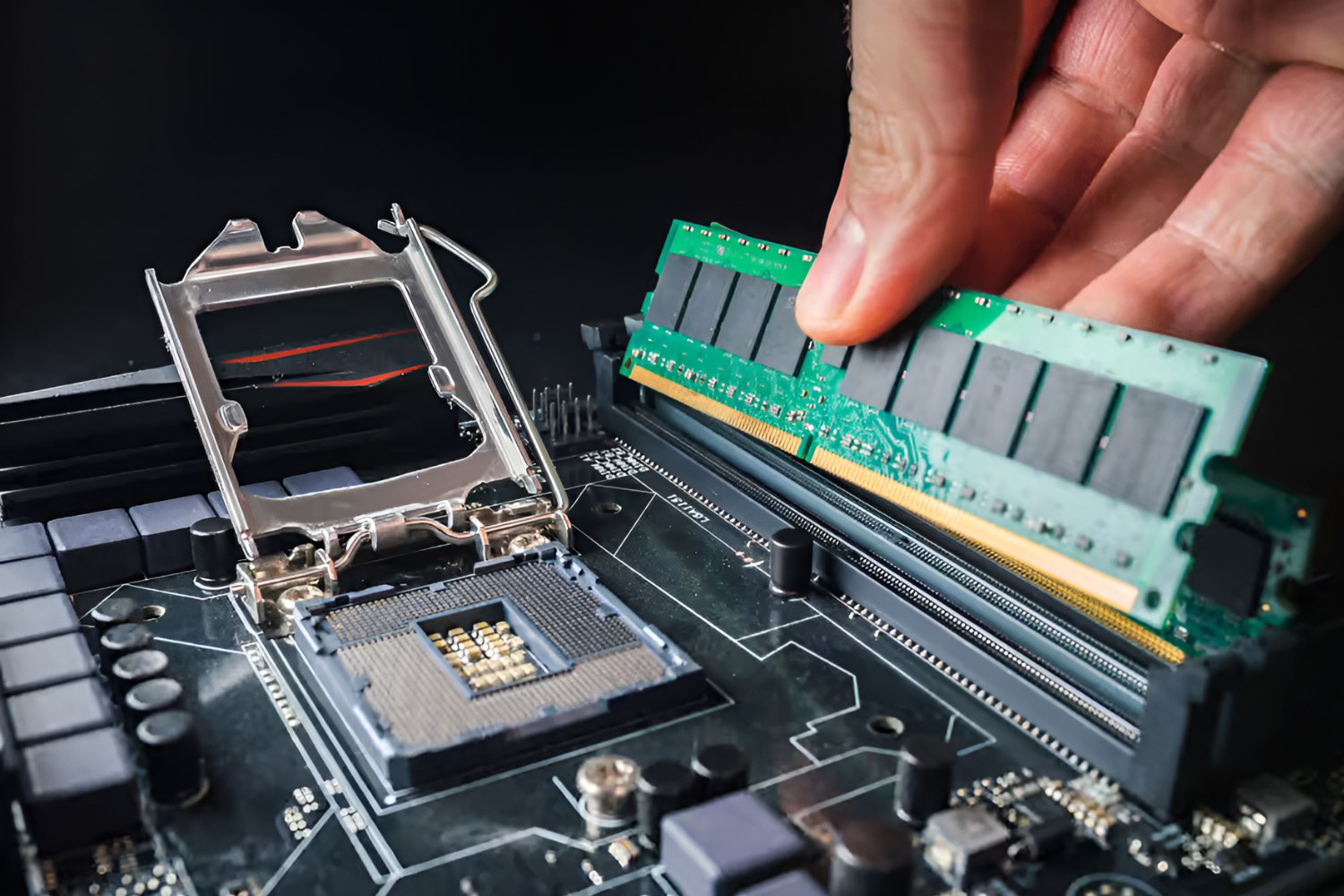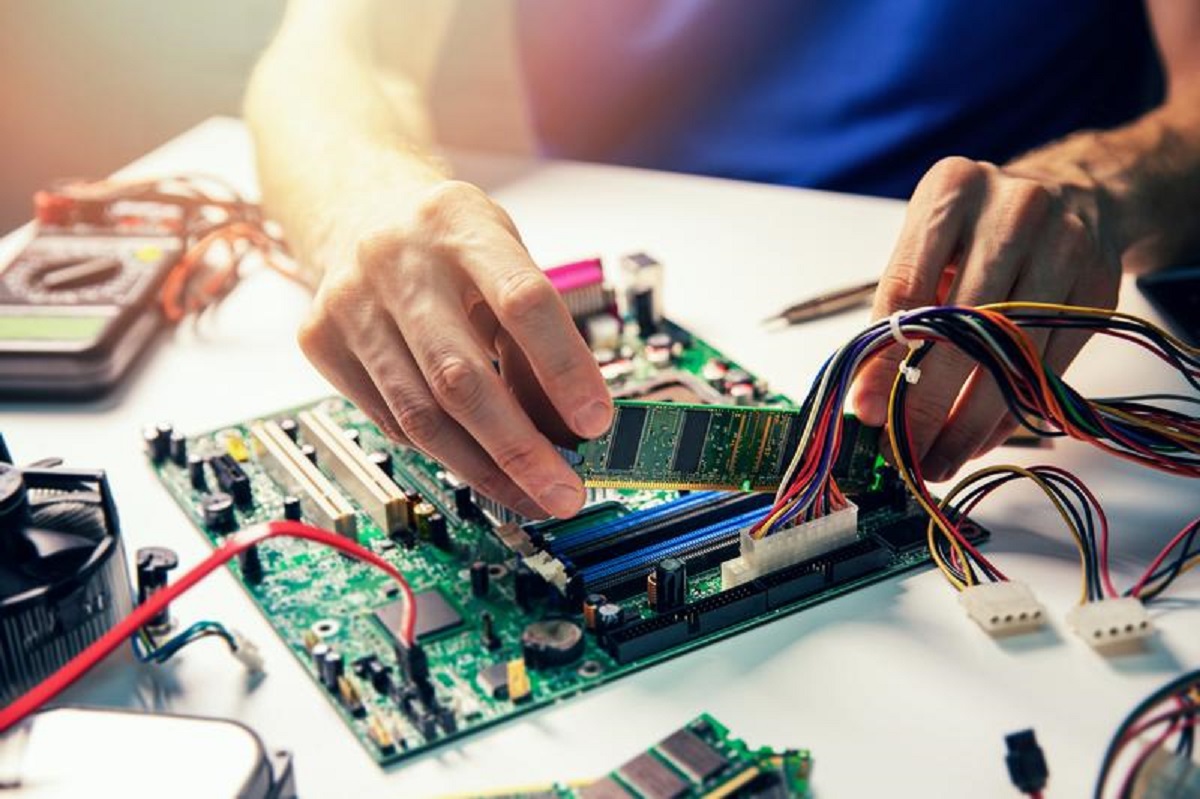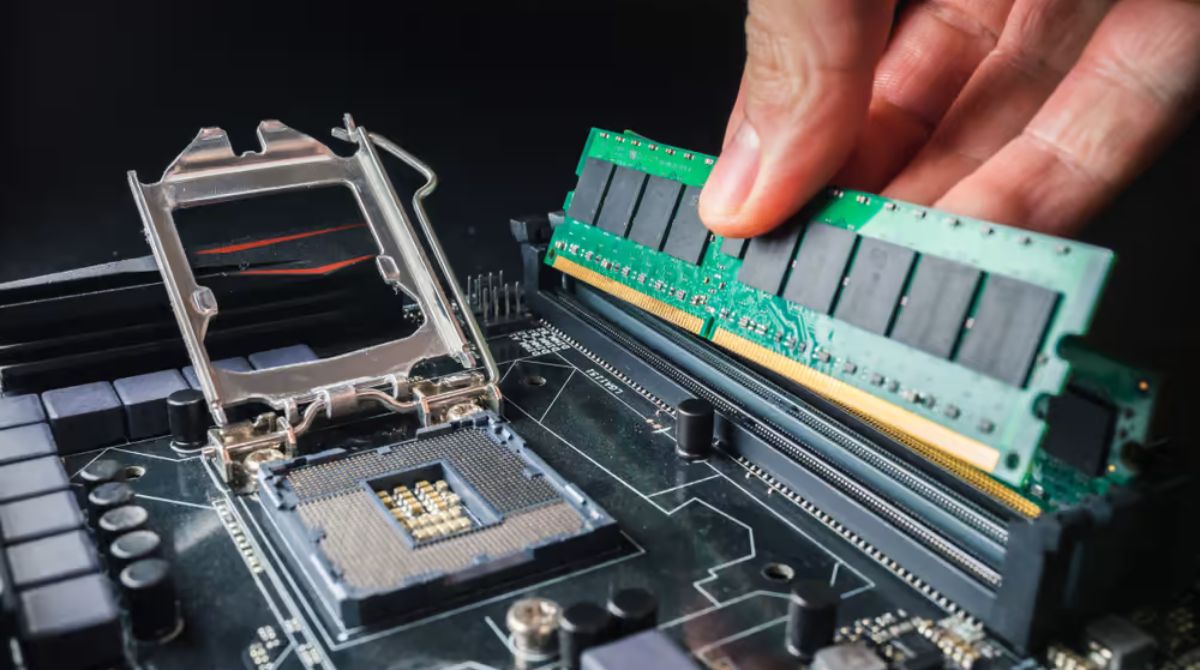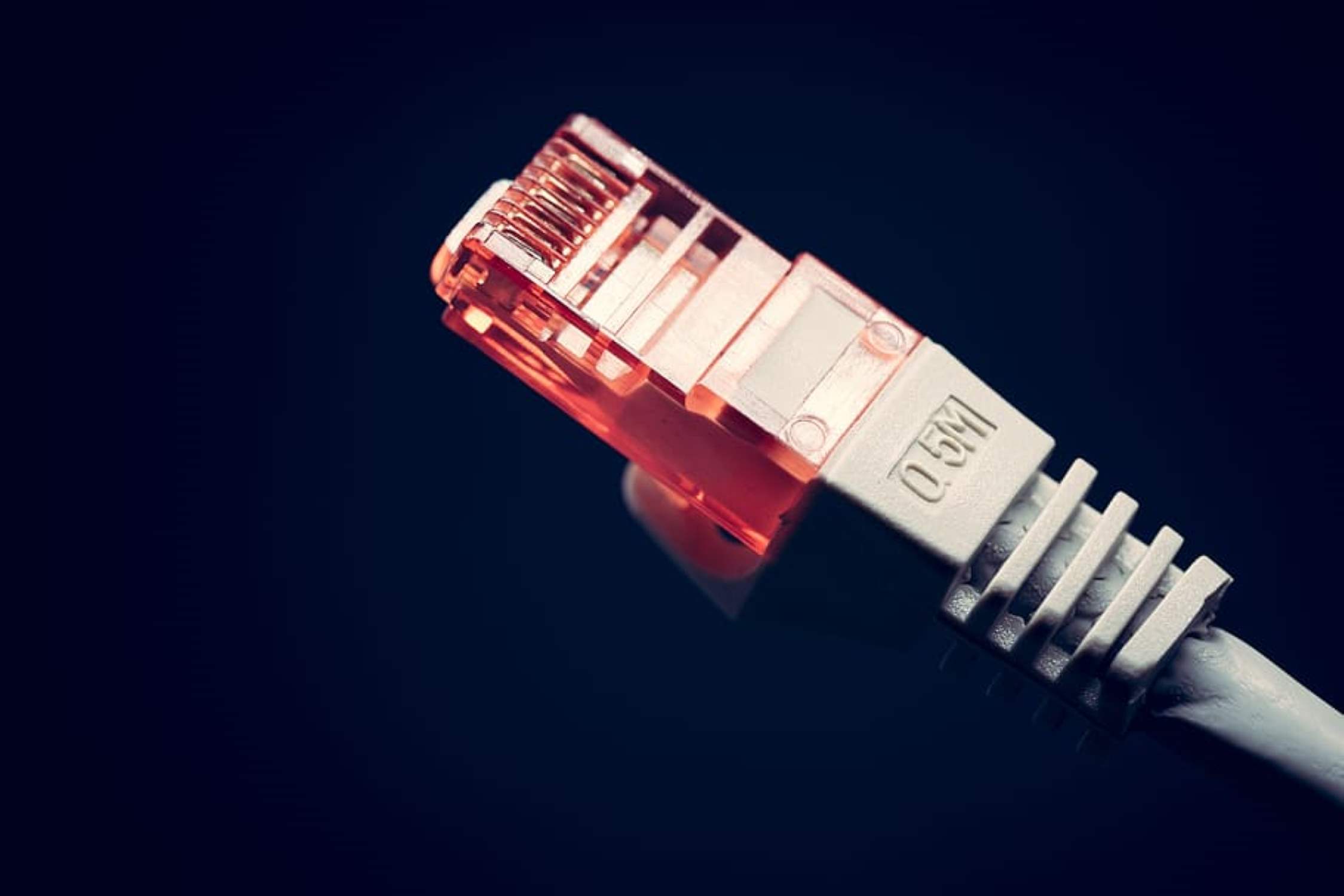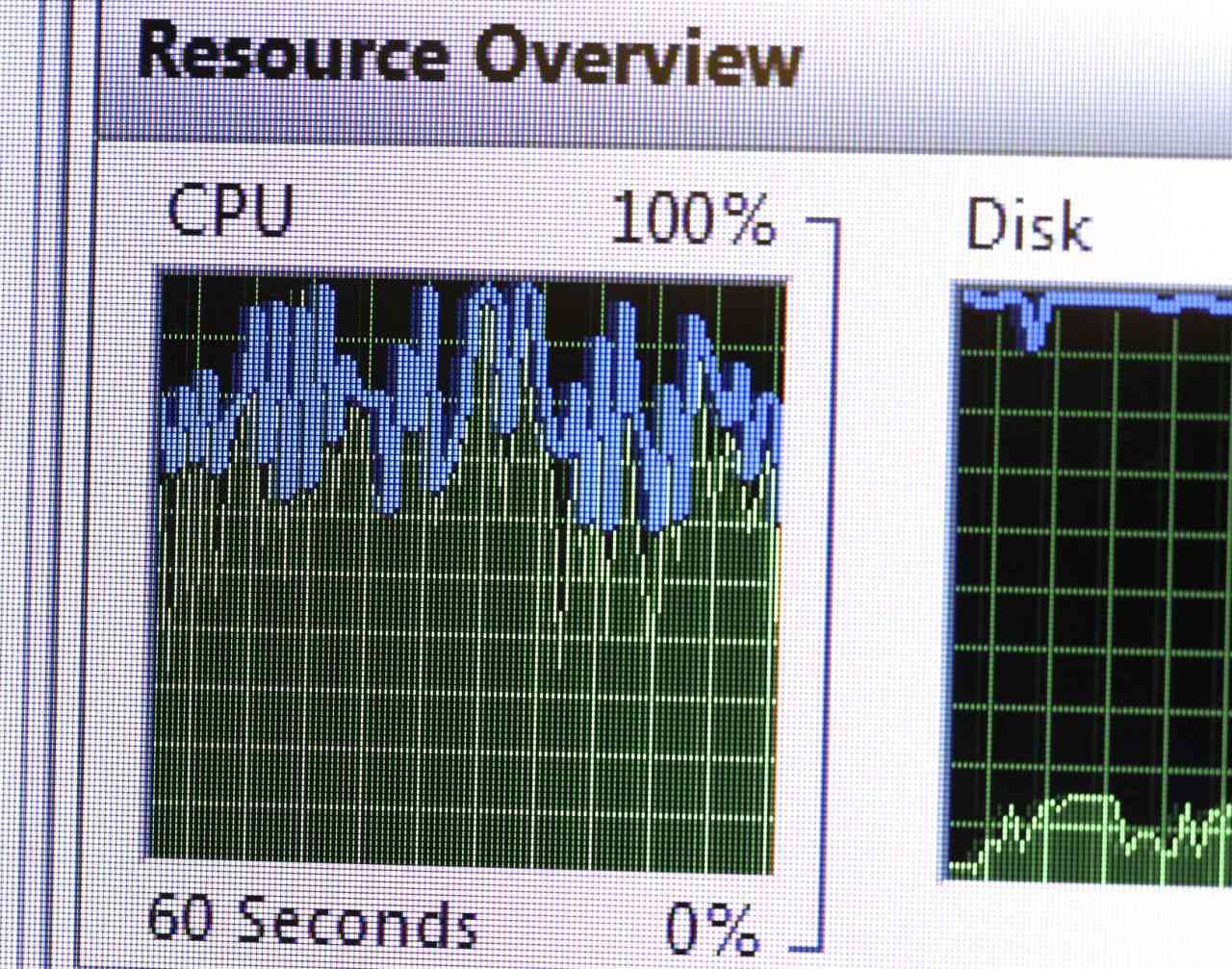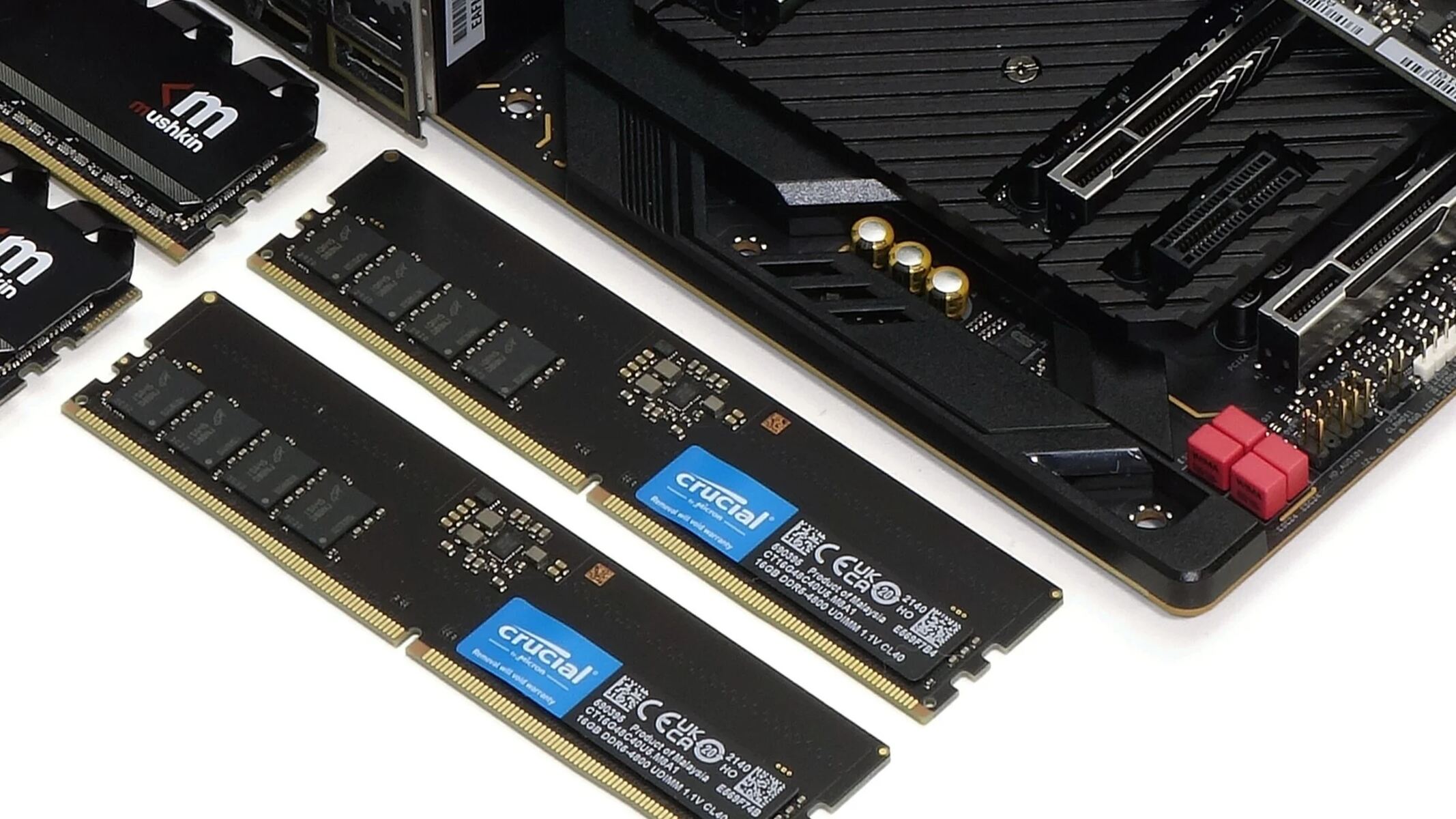Introduction
Have you ever wondered why, despite having a large amount of RAM installed in your computer, only half of it is available for use? This perplexing situation can be frustrating and leave you wondering if your hardware is faulty. However, there are several factors that can contribute to only half of your RAM being accessible by the operating system. Understanding these reasons can help you troubleshoot the issue and optimize your system’s performance.
Random Access Memory, or RAM, is a crucial component of any computer system. It acts as temporary storage for data and instructions that are actively being processed by the CPU. Essentially, the more RAM you have, the more data your computer can handle simultaneously, leading to improved multitasking and faster overall performance.
RAM is managed by the operating system, which allocates memory to different processes and applications on your computer. However, it’s not uncommon to encounter situations where only a portion of the installed RAM is usable. This can be quite puzzling, especially if you recently upgraded your RAM to take advantage of the increased capacity.
In this article, we will explore the reasons why only half of your RAM may be available and provide insights into potential solutions. From hardware limitations to operating system configurations, we will cover the various factors that can impact the accessibility of your computer’s RAM. By the end, you will have a better understanding of this issue and be equipped with the knowledge to mitigate it.
What is RAM?
Before delving into why only half of your RAM may be available, let’s first understand what RAM is and its role in your computer system. RAM, short for Random Access Memory, is a crucial component that plays a vital role in the overall performance of your machine.
RAM is a type of computer memory that is used to temporarily store data and instructions that your computer’s processor (CPU) needs to access quickly. Unlike permanent storage devices, such as hard drives or solid-state drives, RAM is volatile, meaning that its contents are lost when the computer is powered off or restarted.
When you open an application or perform any task on your computer, the relevant data and instructions are loaded into the RAM for quick access by the CPU. This allows the processor to retrieve the required information much faster than if it had to fetch it from the slower permanent storage devices.
The size of your RAM determines how much data your computer can store and access at any given time. Having an adequate amount of RAM is essential for smooth multitasking, as it allows you to run multiple programs simultaneously without experiencing significant performance degradation.
RAM speed is another important factor to consider. The speed of your RAM module determines how quickly the CPU can retrieve information from it. Faster RAM speeds can lead to improved overall system performance, especially in tasks that heavily rely on frequent data access and manipulation.
In summary, RAM serves as a temporary storage area for data and instructions that the CPU needs to access quickly. It plays a critical role in allowing your computer to handle multiple tasks simultaneously and influences the overall speed and responsiveness of your system.
How is RAM Managed by the Operating System?
To understand the reasons why only half of your RAM may be available, it’s important to grasp how RAM is managed by the operating system (OS) of your computer.
When your computer starts up, the operating system is loaded into the RAM, along with any essential system files and drivers. As you open applications and perform tasks, the OS allocates portions of the available RAM to each program based on its resource requirements.
Typically, the operating system divides the RAM into two main segments:
- Kernel Space: This is the portion of RAM reserved for the operating system itself. It contains the core components and processes required for the functioning of the OS.
- User Space: This is the portion of RAM that is allocated to user applications and processes. It holds the data and instructions required by specific programs.
The division between kernel space and user space is designed to provide a separation between the operating system and user applications, ensuring stability and security. The operating system carefully manages the allocation of RAM to ensure that both kernel space and user space have enough resources to function optimally.
When you launch an application, the operating system assigns it a certain amount of memory from the user space. As you open more programs or perform memory-intensive tasks, the operating system dynamically adjusts the amount of RAM allocated to each application. This allows for efficient utilization of available resources and prevents any single program from consuming excessive amounts of memory.
In addition to managing the allocation of RAM to different programs, the operating system also implements techniques such as memory paging and virtual memory to optimize memory usage. These mechanisms involve temporarily storing less frequently used data on the hard drive, freeing up physical RAM for more critical tasks.
By effectively managing the allocation and usage of RAM, the operating system ensures that your computer can run multiple programs smoothly and efficiently. However, various factors can lead to only half of your RAM being available for use, which we will explore in the following sections.
Reasons for Only Half of RAM Being Available
There could be several reasons why only half of your RAM is available for use. Understanding these factors can help you identify the underlying cause and take appropriate steps to address the issue. Let’s explore some of the common reasons:
- Hardware Limitations: Some hardware configurations have limitations on the maximum amount of RAM they can support. For example, a 32-bit operating system can only utilize up to 4GB of RAM due to its addressing limitations. If you have installed more than the supported amount, only a portion will be recognized by the system.
- BIOS Configuration: The system’s basic input/output system (BIOS) settings can affect the amount of RAM that is available. Accessing the BIOS and ensuring that the RAM is properly configured and recognized by the system can resolve this issue.
- Operating System Limitations: Certain versions of operating systems, particularly older ones, may have limitations on the amount of RAM they can utilize. Upgrading to a newer version or applying relevant patches and updates can help resolve this issue.
- Memory Addressing Issues: Some systems may encounter memory addressing conflicts, which can result in only a portion of the installed RAM being accessible. This can occur due to hardware conflicts or improper memory module installation.
- Reserved System Resources: The operating system and certain hardware components may reserve a portion of the RAM for specific purposes, such as graphics memory or system firmware. This reserved memory reduces the total available RAM on your system.
- Faulty RAM Module: In some cases, a faulty RAM module or a malfunctioning RAM slot can cause the system to recognize only a portion of the installed RAM. Performing diagnostic tests or replacement of the defective module can help resolve this issue.
It’s important to note that the specific reason for only half of your RAM being available can vary depending on your system configuration and circumstances. Identifying the root cause may require troubleshooting and investigating each of these factors.
In the following sections, we will explore how to check the available RAM on your system and provide tips on maximizing its utilization for optimal performance.
Hardware Limitations
One of the common reasons why only half of your RAM may be available is hardware limitations. Hardware configurations can have restrictions on the maximum amount of RAM that they can support. This can be especially true for older systems or those with specific chipset limitations.
One significant limitation is related to the use of a 32-bit operating system. A 32-bit operating system can only address up to 4GB of RAM due to its memory addressing limitations. This means that even if you have installed more than 4GB of RAM, your system will only recognize and utilize a portion of it. Typically, this limit translates to around 3.5GB to 3.7GB of usable RAM.
On the other hand, 64-bit operating systems have significantly higher memory addressing capabilities, allowing them to utilize larger amounts of RAM. If you are currently running a 32-bit operating system, upgrading to a 64-bit version could potentially solve the issue and enable your system to access the full capacity of the installed RAM.
In addition to the operating system, the motherboard and chipset also play a role in determining the maximum amount of RAM your system can handle. Each motherboard has a specific limit on the amount of RAM it can support, which is defined by its architecture and supported modules.
It’s crucial to refer to your motherboard’s specifications or consult the manufacturer’s documentation to determine its maximum supported RAM capacity. If you have exceeded this limit, your system may only recognize a portion of the installed RAM, leading to the issue of only half of your RAM being available.
In summary, hardware limitations, such as the use of a 32-bit operating system or a motherboard with restricted RAM capacity, can cause only half of your RAM to be available. Upgrading to a 64-bit operating system and checking the specifications of your motherboard are essential steps to ensure maximum utilization of your installed RAM capacity.
BIOS Configuration
The BIOS (Basic Input/Output System) is firmware that is responsible for initializing and configuring various hardware components during the boot process of your computer. It also contains settings related to the system’s hardware, including the configuration of your RAM.
Incorrect BIOS settings can contribute to only half of your RAM being available. Therefore, it’s important to check and properly configure the BIOS settings related to memory to ensure optimal functionality of your RAM.
Here are a few BIOS settings to consider:
- Memory Remapping: Some older systems may have a memory remapping feature in the BIOS. Enabling this feature allows the system to access the entire installed RAM, regardless of any limitations imposed by the operating system or hardware architecture.
- Memory Speed: The BIOS may provide options to configure the speed of your RAM modules. Make sure that the settings correspond to the actual speed of your RAM. Incorrect settings can result in degraded performance or even cause the system to be unable to boot.
- XMP/DOCP Profiles: If you have RAM modules with XMP (Extreme Memory Profile) or DOCP (Direct Overclock Profile) support, make sure to enable the appropriate profile in the BIOS. This allows the system to automatically configure the RAM settings to operate at their rated frequency and timings.
- Memory Slot Configuration: Ensure that the RAM modules are properly seated in their respective slots. It’s common for systems to have specific slot configurations for optimal performance, such as using dual-channel or quad-channel memory configurations. Refer to your motherboard’s documentation for the correct installation guidelines.
Accessing the BIOS varies depending on the motherboard manufacturer, but it generally involves pressing a specific key (such as Del, F2, or F10) during the system’s boot-up process. Consult your motherboard’s manual or manufacturer’s website for detailed instructions on how to access and navigate the BIOS setup.
Once in the BIOS settings, carefully navigate the memory-related options and make any necessary changes according to your system’s requirements. It’s advisable to take note of the default settings or capture screenshots of the existing configuration before making any modifications, as this can help restore the settings if any issues arise.
By correctly configuring the BIOS settings related to memory, you can ensure that your RAM is recognized and utilized to its full capacity, resolving the issue of only half of your RAM being available.
Operating System Limitations
Operating systems, particularly older versions, may have limitations on the maximum amount of RAM they can effectively utilize. This can result in only half of your installed RAM being recognized and available for use.
One common limitation is found in 32-bit operating systems. A 32-bit operating system can only address up to 4GB of virtual memory, which includes both RAM and other hardware resources. However, not all of this 4GB is available for RAM usage due to memory-mapped hardware devices and system resources. As a result, the usable RAM is typically limited to around 3.5GB to 3.7GB.
To address this limitation, consider upgrading to a 64-bit operating system which can effectively utilize larger amounts of RAM. A 64-bit operating system can theoretically support up to 18.4 million TB (terabytes) of RAM, allowing for the full utilization of your installed RAM capacity.
It’s important to note that even with a 64-bit operating system, certain editions or versions may have memory limitations. For example, the Windows 10 Home edition has a maximum limit of 128GB of RAM, while the Professional and Enterprise editions can support up to 2TB of RAM.
In addition to the operating system version, ensure that you have the latest updates and patches installed. Sometimes, operating system updates include enhancements that address RAM limitations and improve overall memory management.
If you are already using a 64-bit operating system and are experiencing issues with only half of your RAM being available, consider researching whether there are any specific limitations or known issues related to your operating system version. Manufacturer forums, online support communities, or official documentation can provide valuable insights into potential operating system limitations.
By upgrading to a 64-bit operating system or ensuring that you have the latest updates installed, you can mitigate the operating system limitations that may be causing only half of your RAM to be available.
Memory Addressing Issues
Memory addressing issues can occur due to various reasons and can result in only half of your installed RAM being accessible by the system. These issues can be related to hardware conflicts or improper installation of memory modules.
One common memory addressing issue is a hardware conflict. In some cases, incompatible hardware components or conflicting devices can cause conflicts in the memory address space. These conflicts can prevent the system from recognizing and utilizing the full capacity of the installed RAM.
To resolve hardware conflicts, ensure that all hardware components, including RAM, are compatible with each other and with your motherboard. Verify that the motherboard supports the type and speed of the RAM modules you have installed. Refer to the motherboard’s documentation or the manufacturer’s website for compatibility information.
Another potential memory addressing issue can arise from improper installation of memory modules. Ensure that the RAM modules are properly seated in their respective slots according to the motherboard’s guidelines. In some cases, reseating the modules or swapping them to different slots can help resolve addressing conflicts and allow the system to recognize the full capacity of the RAM.
Faulty or malfunctioning memory modules can also contribute to memory addressing issues. If you suspect a faulty RAM module, you can try removing one module at a time and testing the system’s performance. This process can help identify if a specific module is causing the issue. If you determine that a module is faulty, replacement with a new module of the same specifications is recommended.
It’s also important to ensure that your computer’s firmware, including the motherboard’s BIOS, is up to date. Updated firmware can often address memory addressing issues and improve compatibility with the installed hardware components.
Performing diagnostic tests, such as memory diagnostics tools or stress tests, can help identify memory errors and address memory-related issues. Additionally, software utilities provided by the memory module manufacturer may assist in diagnosing and resolving memory addressing issues.
By resolving memory addressing issues related to hardware conflicts, proper installation, and faulty modules, you can overcome the limitations that may be causing only half of your installed RAM to be accessible.
Reserved System Resources
Reserved system resources can contribute to the situation where only half of your installed RAM is available for use. The operating system and certain hardware components may reserve a portion of the RAM for specific purposes, resulting in reduced usable memory.
One common example of reserved system resources is graphics memory. Integrated or dedicated graphics cards often have their dedicated memory that is reserved for rendering graphics and processing visual data. This reserved memory reduces the amount of RAM available for general system usage.
Another example is system firmware, such as the BIOS or UEFI. These firmware components may allocate a portion of the RAM for their own use, including system management tasks, hardware initialization, and storing system setup information. While essential for system functionality, this reserved memory limits the available RAM capacity.
Other system resources, such as memory-mapped I/O and device drivers, may also contribute to reserved memory. These resources facilitate communication between the operating system and hardware devices, but they can further reduce the amount of RAM accessible to user applications.
While the allocation of reserved system resources is necessary for proper system functioning, some settings allow you to adjust the amount of reserved memory, depending on your specific requirements.
Enter the system BIOS or UEFI settings and look for options related to graphics memory allocation or reserved memory configurations. You may find settings that allow you to adjust the amount of memory allocated to the graphics card or other system resources. However, be cautious when making changes to these settings as incorrect adjustments can lead to system instability or graphical issues.
Keep in mind that while adjusting reserved memory settings can increase the amount of available RAM, it may impact the performance of the associated system components. Ensure that you have a clear understanding of the implications before making any changes to reserved memory allocations.
Overall, reserved system resources such as graphics memory and firmware play a vital role in system functionality, but can reduce the available RAM. By adjusting reserved memory settings within the BIOS or UEFI, you have the potential to increase the usable system memory, striking a balance between performance and functionality.
Faulty RAM Module
A faulty RAM module can be another reason why only half of your installed RAM is recognized by the system. A defective module or a malfunctioning RAM slot can prevent the system from accessing the full capacity of the installed RAM.
When a RAM module goes bad, it can result in various issues, including the system recognizing only a portion of the installed RAM. This can manifest as the system displaying lower available memory or experiencing frequent crashes and memory-related errors.
To troubleshoot and identify a faulty RAM module, you can perform diagnostic tests to check for memory errors. Many operating systems have built-in memory diagnostic tools that can be accessed during startup or through specialized software utilities.
Start by removing all but one RAM module from your system and booting it up. If the system recognizes the single module and operates normally without any memory-related issues, it suggests that the other module(s) may be faulty. To further isolate the problem, repeat the process with each individual module.
Additionally, you can try reseating the RAM modules, ensuring that they are properly inserted into the memory slots. Sometimes, poor contact or loose connections can result in the system not detecting or utilizing the RAM correctly.
If you suspect a faulty RAM module, consider borrowing or purchasing a replacement of the same specifications (type, speed, and capacity) to confirm whether the issue lies with the module or with other factors. Replacing the faulty module with a new one should address the problem and allow the system to recognize and utilize the full installed RAM capacity.
It’s worth noting that a faulty RAM slot on the motherboard can also be a potential cause of the issue. If you have tested multiple RAM modules in different slots, and the system still fails to recognize the full RAM capacity in any slot, it indicates a potential problem with the motherboard. In such cases, contacting a professional technician or considering a motherboard replacement may be necessary.
Remember to handle the RAM modules with care, avoiding electrostatic discharge and following proper installation procedures to prevent any damage to the modules or the motherboard.
Resolving the issue of only half of your RAM being recognized by identifying and replacing faulty RAM modules or addressing motherboard-related issues can restore the full capacity of your installed RAM.
How to Check Available RAM on Your System
To determine the available RAM on your system, you can use various methods and tools depending on the operating system you are using. Here are some common ways to check the available RAM:
- Task Manager/Activity Monitor: On Windows, you can open the Task Manager by right-clicking on the taskbar and selecting “Task Manager.” Go to the “Performance” tab, and under the “Memory” section, you will find information about the total installed RAM, as well as the amount of available RAM. On macOS, open the Activity Monitor from the Utilities folder in the Applications folder. The “Memory” tab displays similar information about the available RAM.
- System Information: Both Windows and macOS provide system information tools that display detailed hardware specifications. On Windows, you can access the System Information tool by searching for “System Information” in the Start menu. Look for the “Installed Physical Memory” or “Total Physical Memory” value to determine the total installed RAM. On macOS, click on the Apple menu, select “About This Mac,” and then click on the “Memory” tab to view the total installed RAM.
- Command Line: Another method to check available RAM is by using command-line utilities. On Windows, open the Command Prompt or PowerShell and type “wmic memorychip get capacity” to display the total installed RAM. To check available RAM, type “wmic OS get FreePhysicalMemory” to view the available memory in kilobytes. On macOS or Linux, open the Terminal and type “free -h” to display memory information, including total, used, and free memory.
Additionally, various third-party software tools are available that provide detailed information about the system’s hardware, including RAM. Some popular examples include CPU-Z, Speccy, HWiNFO, and AIDA64 on Windows, and iStat Menus or Macs Fan Control on macOS.
Remember that the specific method to check available RAM may vary depending on the operating system version or the tools/software available. Consulting the documentation or online resources specific to your operating system can provide detailed instructions or alternative methods to determine the available RAM on your system.
Knowing the available RAM on your system can help you troubleshoot issues, determine compatibility for software or hardware upgrades, and monitor the system’s overall performance.
How to Maximize Available RAM
If you want to make the most of the available RAM on your system and optimize its utilization, here are some effective strategies to consider:
- Close Unnecessary Programs: Closing programs and processes that are not in use can free up valuable RAM. These programs may still be running in the background and consuming memory even if you are not actively using them.
- Disable Startup Programs: Some applications automatically start with your computer, using up RAM resources. Disable unnecessary startup programs to reduce memory usage during system boot-up.
- Manage Background Processes: Take control of background processes and services that run on your system. Some apps may have unnecessary background processes that consume memory. Disable or limit background processes to free up RAM.
- Optimize Virtual Memory/Paging: Adjusting virtual memory settings can help maximize available RAM. Virtual memory uses parts of the hard drive as additional memory when needed. Configure virtual memory settings to allow the system to manage paging efficiently.
- Upgrade RAM: If you frequently encounter low available RAM, consider upgrading your RAM modules. Increasing the physical memory capacity can provide more space for running applications and improve system performance.
- Clean Up Disk Space: Ensure that your hard drive has sufficient free space. A full hard drive can impact system performance and cause memory allocation issues. Remove unnecessary files, uninstall unused applications, and regularly perform disk cleanup to optimize disk space.
- Update Operating System and Drivers: Keeping your operating system and device drivers up to date can improve system stability and maximize RAM utilization. Updates often include bug fixes, performance enhancements, and improved memory management.
- Scan for Malware: Malware and viruses can consume system resources, including memory. Regularly scan your system for malware and remove any detected threats to ensure optimal performance and RAM availability.
- Minimize Browser Tabs and Extensions: Web browsers can be memory-intensive, especially when multiple tabs or extensions are open. Limit the number of open tabs and disable unnecessary extensions to reduce RAM usage.
- Use Lightweight Applications: Opt for lightweight alternatives to resource-intensive applications. Lightweight apps consume less memory and can improve overall system performance by reducing RAM usage.
By implementing these strategies, you can maximize the available RAM on your system and ensure that it is utilized efficiently. Monitoring the system’s RAM usage and performance after applying these optimizations can help you assess the effectiveness of these techniques.
Conclusion
Understanding why only half of your RAM is available for use can be perplexing, but by exploring the various factors discussed in this article, you can gain insights into the potential causes and solutions. Hardware limitations, BIOS configurations, operating system limitations, memory addressing issues, reserved system resources, and faulty RAM modules are all potential contributors to this issue.
It’s important to assess your hardware configuration, including the operating system and motherboard, to determine any limitations on the amount of RAM that can be recognized and utilized. BIOS settings should be properly configured to ensure optimal functionality, and any memory addressing issues or malfunctioning RAM modules should be identified and resolved.
Knowing how to check the available RAM on your system and employing strategies to maximize its utilization can help improve your system’s performance. By closing unnecessary programs, managing background processes, optimizing virtual memory, upgrading RAM, cleaning up disk space, and keeping your operating system and drivers up to date, you can make the most of the available RAM and enhance your overall computing experience.
Remember, each system may have unique circumstances, and troubleshooting this issue may require a combination of the strategies discussed. If you encounter more complex problems or require professional assistance, it is recommended to consult with an expert or seek support from the relevant hardware or software manufacturers.
By addressing these factors and optimizing the utilization of your available RAM, you can enjoy improved multitasking capabilities, faster application processing, and an overall smoother computing experience.







